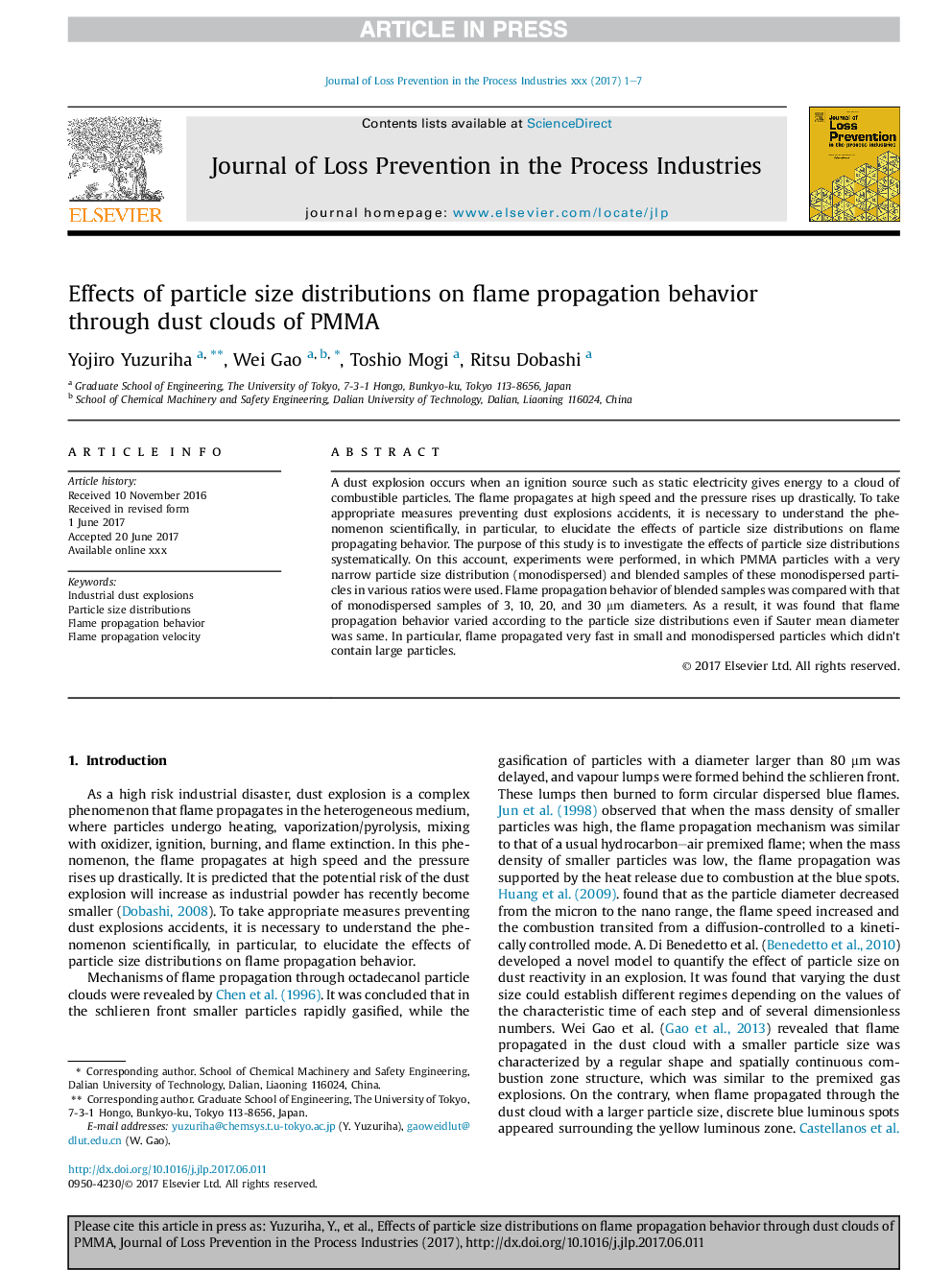| Article ID | Journal | Published Year | Pages | File Type |
|---|---|---|---|---|
| 4980287 | Journal of Loss Prevention in the Process Industries | 2017 | 7 Pages |
Abstract
A dust explosion occurs when an ignition source such as static electricity gives energy to a cloud of combustible particles. The flame propagates at high speed and the pressure rises up drastically. To take appropriate measures preventing dust explosions accidents, it is necessary to understand the phenomenon scientifically, in particular, to elucidate the effects of particle size distributions on flame propagating behavior. The purpose of this study is to investigate the effects of particle size distributions systematically. On this account, experiments were performed, in which PMMA particles with a very narrow particle size distribution (monodispersed) and blended samples of these monodispersed particles in various ratios were used. Flame propagation behavior of blended samples was compared with that of monodispersed samples of 3, 10, 20, and 30 μm diameters. As a result, it was found that flame propagation behavior varied according to the particle size distributions even if Sauter mean diameter was same. In particular, flame propagated very fast in small and monodispersed particles which didn't contain large particles.
Keywords
Related Topics
Physical Sciences and Engineering
Chemical Engineering
Chemical Health and Safety
Authors
Yojiro Yuzuriha, Wei Gao, Toshio Mogi, Ritsu Dobashi,
